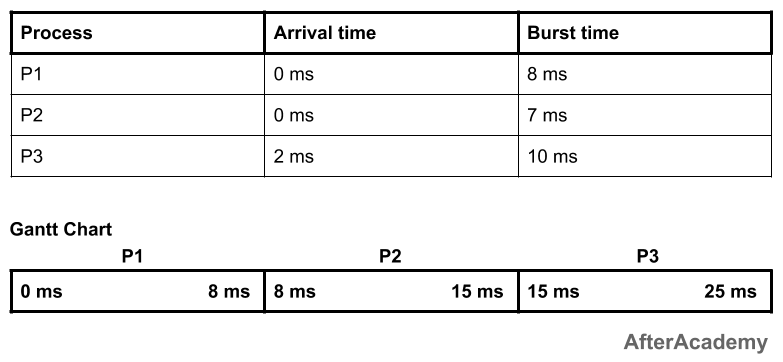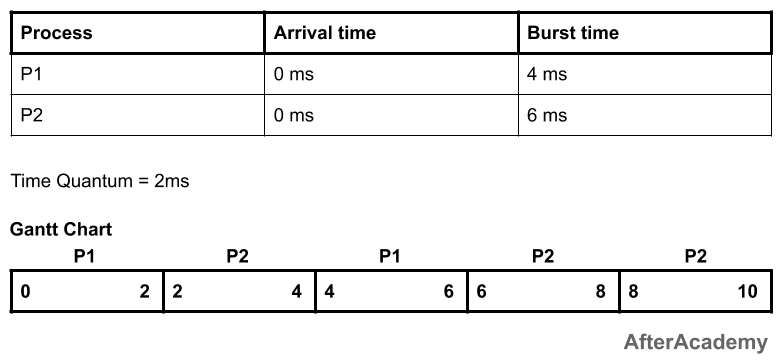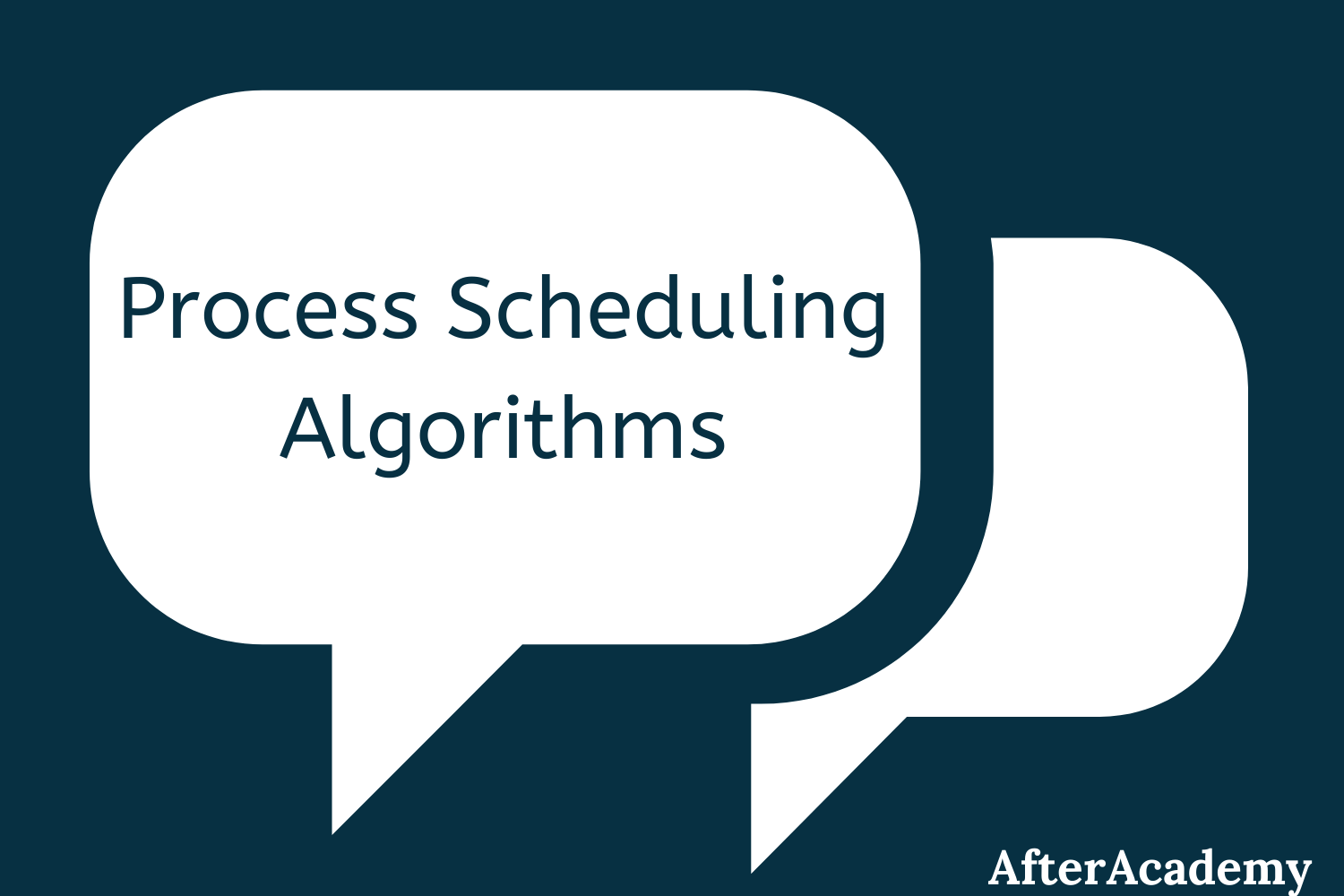What is Burst time, Arrival time, Exit time, Response time, Waiting time, Turnaround time, and Throughput?

When we are dealing with some CPU scheduling algorithms then we encounter with some confusing terms like Burst time, Arrival time, Exit time, Waiting time, Response time, Turnaround time, and throughput. These parameters are used to find the performance of a system. So, in this blog, we will learn about these parameters. Let's get started one by one.
Burst time
Every process in a computer system requires some amount of time for its execution. This time is both the CPU time and the I/O time. The CPU time is the time taken by CPU to execute the process. While the I/O time is the time taken by the process to perform some I/O operation. In general, we ignore the I/O time and we consider only the CPU time for a process. So, Burst time is the total time taken by the process for its execution on the CPU.
Arrival time
Arrival time is the time when a process enters into the ready state and is ready for its execution.

Here in the above example, the arrival time of all the 3 processes are 0 ms, 1 ms, and 2 ms respectively.
Exit time
Exit time is the time when a process completes its execution and exit from the system.
Response time
Response time is the time spent when the process is in the ready state and gets the CPU for the first time. For example, here we are using the First Come First Serve CPU scheduling algorithm for the below 3 processes:

Here, the response time of all the 3 processes are:
- P1: 0 ms
- P2: 7 ms because the process P2 have to wait for 8 ms during the execution of P1 and then after it will get the CPU for the first time. Also, the arrival time of P2 is 1 ms. So, the response time will be 8-1 = 7 ms.
- P3: 13 ms because the process P3 have to wait for the execution of P1 and P2 i.e. after 8+7 = 15 ms, the CPU will be allocated to the process P3 for the first time. Also, the arrival of P3 is 2 ms. So, the response time for P3 will be 15-2 = 13 ms.
Response time = Time at which the process gets the CPU for the first time - Arrival time
Waiting time
Waiting time is the total time spent by the process in the ready state waiting for CPU. For example, consider the arrival time of all the below 3 processes to be 0 ms, 0 ms, and 2 ms and we are using the First Come First Serve scheduling algorithm.

Then the waiting time for all the 3 processes will be:
- P1: 0 ms
- P2: 8 ms because P2 have to wait for the complete execution of P1 and arrival time of P2 is 0 ms.
- P3: 13 ms becuase P3 will be executed after P1 and P2 i.e. after 8+7 = 15 ms and the arrival time of P3 is 2 ms. So, the waiting time of P3 will be: 15-2 = 13 ms.
Waiting time = Turnaround time - Burst time
In the above example, the processes have to wait only once. But in many other scheduling algorithms, the CPU may be allocated to the process for some time and then the process will be moved to the waiting state and again after some time, the process will get the CPU and so on.
There is a difference between waiting time and response time. Response time is the time spent between the ready state and getting the CPU for the first time. But the waiting time is the total time taken by the process in the ready state. Let's take an example of a round-robin scheduling algorithm. The time quantum is 2 ms.

In the above example, the response time of the process P2 is 2 ms because after 2 ms, the CPU is allocated to P2 and the waiting time of the process P2 is 4 ms i.e turnaround time - burst time (10 - 6 = 4 ms).
Turnaround time
Turnaround time is the total amount of time spent by the process from coming in the ready state for the first time to its completion.
Turnaround time = Burst time + Waiting time
or
Turnaround time = Exit time - Arrival time
For example, if we take the First Come First Serve scheduling algorithm, and the order of arrival of processes is P1, P2, P3 and each process is taking 2, 5, 10 seconds. Then the turnaround time of P1 is 2 seconds because when it comes at 0th second, then the CPU is allocated to it and so the waiting time of P1 is 0 sec and the turnaround time will be the Burst time only i.e. 2 seconds. The turnaround time of P2 is 7 seconds because the process P2 have to wait for 2 seconds for the execution of P1 and hence the waiting time of P2 will be 2 seconds. After 2 seconds, the CPU will be given to P2 and P2 will execute its task. So, the turnaround time will be 2+5 = 7 seconds. Similarly, the turnaround time for P3 will be 17 seconds because the waiting time of P3 is 2+5 = 7 seconds and the burst time of P3 is 10 seconds. So, turnaround time of P3 is 7+10 = 17 seconds.
Different CPU scheduling algorithms produce different turnaround time for the same set of processes. This is because the waiting time of processes differ when we change the CPU scheduling algorithm.
Throughput
Throughput is a way to find the efficiency of a CPU. It can be defined as the number of processes executed by the CPU in a given amount of time. For example, let's say, the process P1 takes 3 seconds for execution, P2 takes 5 seconds, and P3 takes 10 seconds. So, throughput, in this case, the throughput will be (3+5+10)/3 = 18/3 = 6 seconds.
In this blog, we learned about Burst time, Arrival time, Exit time, Response time, Waiting time, Turnaround time, and Throughput.
Hope you learned something new today.
Keep Learning :)
Team AfterAcademy!



